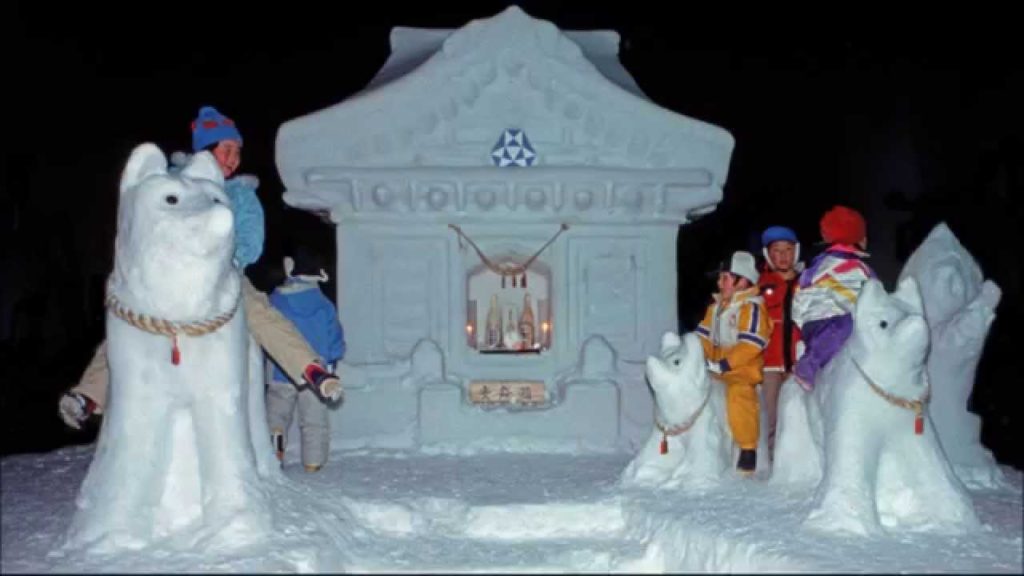Inukko-matsuri, Yuzawa, Akita 犬っ子祭り 秋田県湯沢市 by Kari Gröhn karigrohncom
Inukko (dog) matsuri in Yuzawa originated in the early Edo period when people decorated the entrance and windows of their storehouses and houses with small images of dogs, cranes and tortoises made from rice powder (mochi) as charms to ward off burglars. Nowadays snow dogs are offered in front of snow shrines in prayers for protection against evil and for a rich harvest. In the light of candles and fireworks they glimmer creating an aura of mystery. In front of the main shrine, known as Inukko Jinja, a Shinto Priest blesses a number of canines that represent dog breeds from other prefectures.
Around the early Edo period some masterless samurai called day-time burglars (hakuto) attacked houses in broad daylight. Their objective was actually killing people rather than stealing money. This violence could not be tolerated and the Lord of Yuzawa fought off bandits. To celebrate peace villagers made dolls out of rice flour in the form of small dogs and displayed them in front of their homes. Children made snow shrines at the gate and played at night until small hours offering dolls, rice cakes, and amazake (a hot sweet drink made of malted rice) on the altar.
The Akita dog is said to be strong, independent, aloof with strangers but very affectionate and loyal to family members. One of the most famous examples is Hachiko, who continued to wait for his master’s arrival everyday for nine years after he had died.
The Akita dog is a cousin of the Finnish spitz (Akitan koira on suomenpystykorvan serkku).
Inukko matsuri Yuzawa Akita 犬っ子祭り 秋田県湯沢市 by Kari Gröhn karigrohncom
Wolfgang Amadeus Mozart (1756-1791) Piano Concerto No 19, Movement 1, Allegro vivace, Clara Haskil (1895-1960)


AloJapan.com